For decades, retinol has been revered as a cornerstone of modern dermatology, celebrated for its transformative effects on skin texture, tone, and overall appearance. Today, one of its most researched and recognized applications lies in addressing hyperpigmentation, including the persistent and often frustrating issue of dark spots. Whether caused by sun exposure, acne scarring, or hormonal changes, dark spots can affect both the physical appearance and psychological confidence of individuals. With increasing demand for non-invasive and scientifically backed skin treatments, interest in understanding the effectiveness of retinol for dark spots has surged—especially through detailed analysis of retinol dark spots before and after results. This article explores the mechanisms, dermatological endorsements, clinical outcomes, and practical guidelines surrounding retinol use, weaving together expert insight and evidence to offer a comprehensive understanding of its impact on hyperpigmented skin.
You may also like: How to Choose Skin Care for Fine Lines: Evidence-Based Tips for Healthier, Younger-Looking Skin
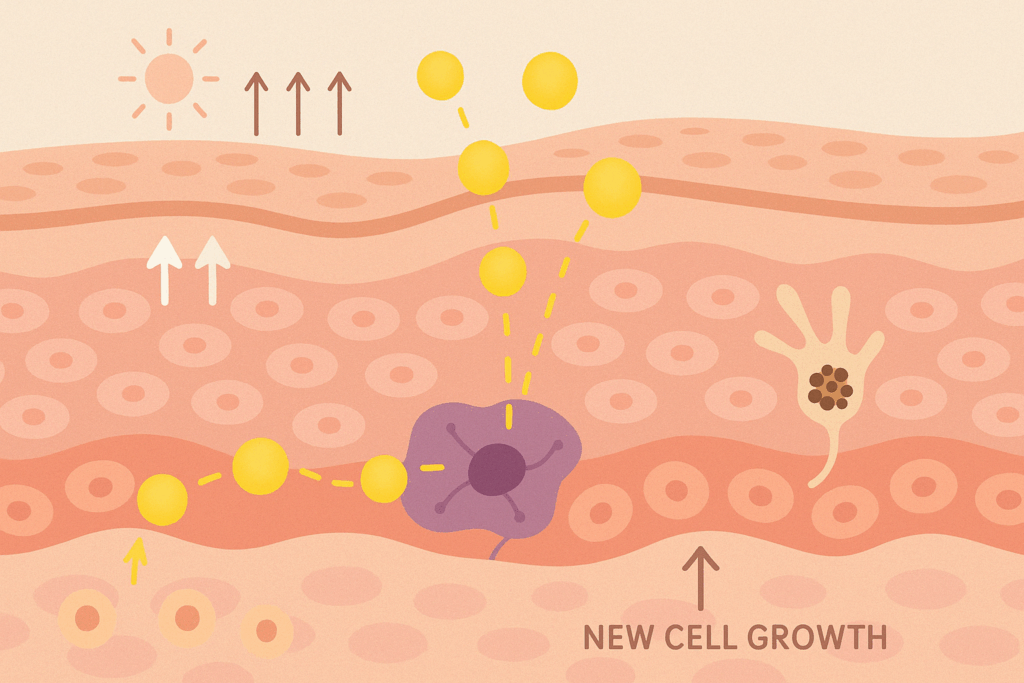
Understanding How Retinol Works at a Cellular Level
To appreciate the visible improvements documented in retinol before and after transformations, it is essential to understand the science behind retinol’s mode of action. Retinol, a derivative of vitamin A, works by accelerating the skin’s natural cell turnover process. It penetrates the dermis and stimulates fibroblasts—the cells responsible for collagen production—while also inhibiting melanin synthesis in melanocytes, the pigment-producing cells. These dual actions contribute to fading existing dark spots and preventing the formation of new ones.
One reason retinol for dark spots is so effective lies in its ability to exfoliate the skin on a microscopic level. By shedding dead skin cells and promoting the growth of new, evenly pigmented cells, retinol visibly brightens the complexion. This function is particularly beneficial for those with post-inflammatory hyperpigmentation, often seen after acne lesions have healed. Retinol use before and after such cases often reveals substantial improvement not only in pigmentation but also in overall skin smoothness and clarity.
Clinical dermatologists often emphasize the importance of consistency and patience when evaluating retinol dark spots before and after results. Given that the skin renews approximately every 28 days, noticeable improvements typically emerge over the course of 8 to 12 weeks. During this time, users often document a progressive lightening of dark spots, supported by histological studies showing decreased melanin density and increased collagen presence in treated skin samples.
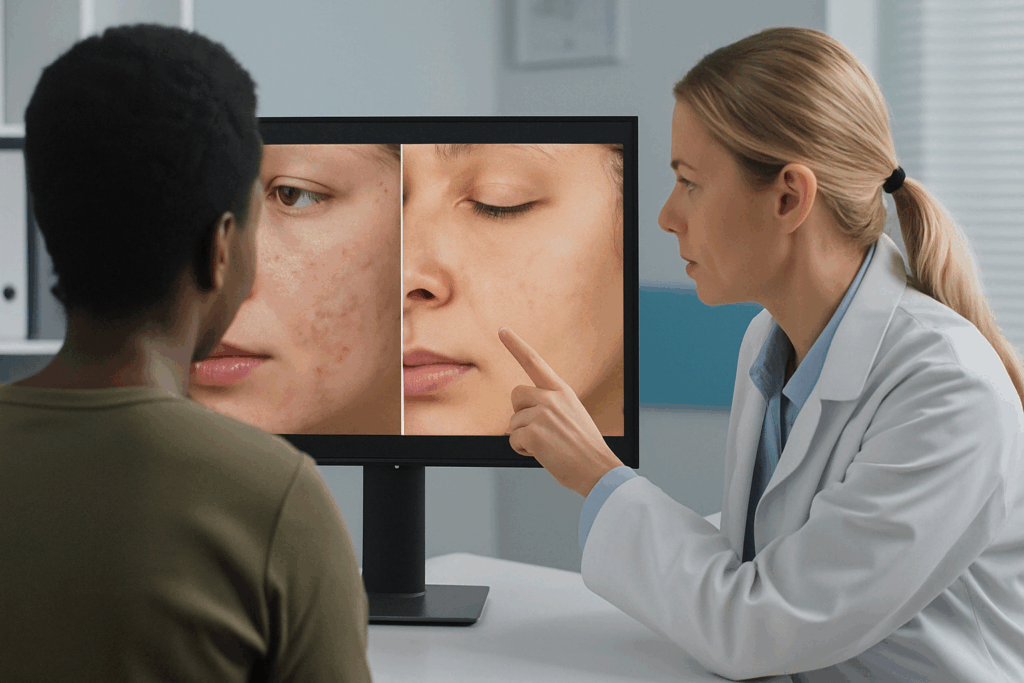
Dermatological Endorsements and Research Evidence
A growing body of peer-reviewed research continues to affirm the efficacy of retinol in reducing hyperpigmentation. Dermatologists across the globe endorse retinol as a first-line treatment for dark spots, particularly due to its well-documented safety profile and evidence-based outcomes. Studies comparing retinol cream before and after effects consistently demonstrate measurable reductions in both pigmentation intensity and lesion size.
For instance, a randomized clinical trial published in the Journal of Investigative Dermatology found that participants who used 0.3% retinol cream daily for 12 weeks experienced significant fading of age spots, with many noting a reduction in the size and color depth of pigmented areas. Additionally, participants also reported smoother skin texture and diminished fine lines, underscoring the multitasking capabilities of this active compound. Dermatologists often highlight that while stronger prescription retinoids like tretinoin yield faster results, over-the-counter retinol offers a gentler introduction for most skin types, making it a preferred choice for long-term maintenance.
Visual documentation through high-resolution imaging provides further validation of retinol cream before and after transformations. These images, often used in clinical settings, reveal distinct improvements in pigmentation irregularities and show how the skin becomes more evenly toned over time. Experts caution, however, that lighting conditions and photographic enhancements can sometimes skew perception, emphasizing the importance of objective clinical assessment tools such as melanin index measurements and reflectance spectroscopy.
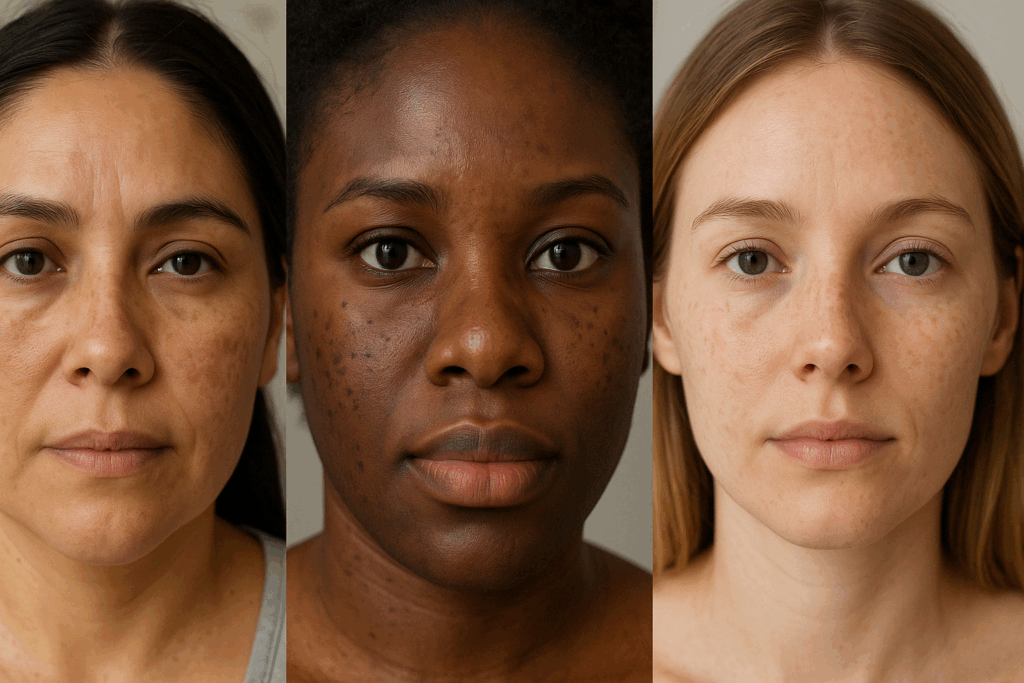
Differentiating Retinol’s Effectiveness on Various Types of Dark Spots
Not all dark spots are created equal, and the success of retinol treatments depends significantly on the underlying cause. Melasma, for instance, is a hormonally driven pigmentation disorder that can be more resistant to treatment. While retinol can help fade melasma, it is often combined with other agents like hydroquinone, azelaic acid, or niacinamide to optimize outcomes. In contrast, post-inflammatory hyperpigmentation (PIH) and sunspots, which are often the result of trauma or UV exposure, respond more favorably to retinol alone.
When evaluating retinol dark spots before and after changes in patients with PIH, improvements are typically more rapid and pronounced. This is likely due to the superficial location of pigmentation in these cases, which retinol targets effectively through its exfoliative and cell turnover properties. Individuals using retinol for dark spots due to acne often notice that pigmented marks begin to fade within six to eight weeks of consistent use, especially when paired with a broad-spectrum sunscreen to prevent further UV-induced pigmentation.
Age-related dark spots, commonly referred to as liver spots or solar lentigines, also show positive responses to retinol. These lesions, which are caused by cumulative sun damage over decades, can lighten gradually with regular use of retinol cream. Dermatologists caution that deeper, dermal pigmentation may take longer to fade and that the use of a retinol formulation with enhanced penetration capabilities may yield better outcomes. Combining retinol with antioxidant-rich serums may further accelerate the fading process by reducing oxidative stress in the skin.
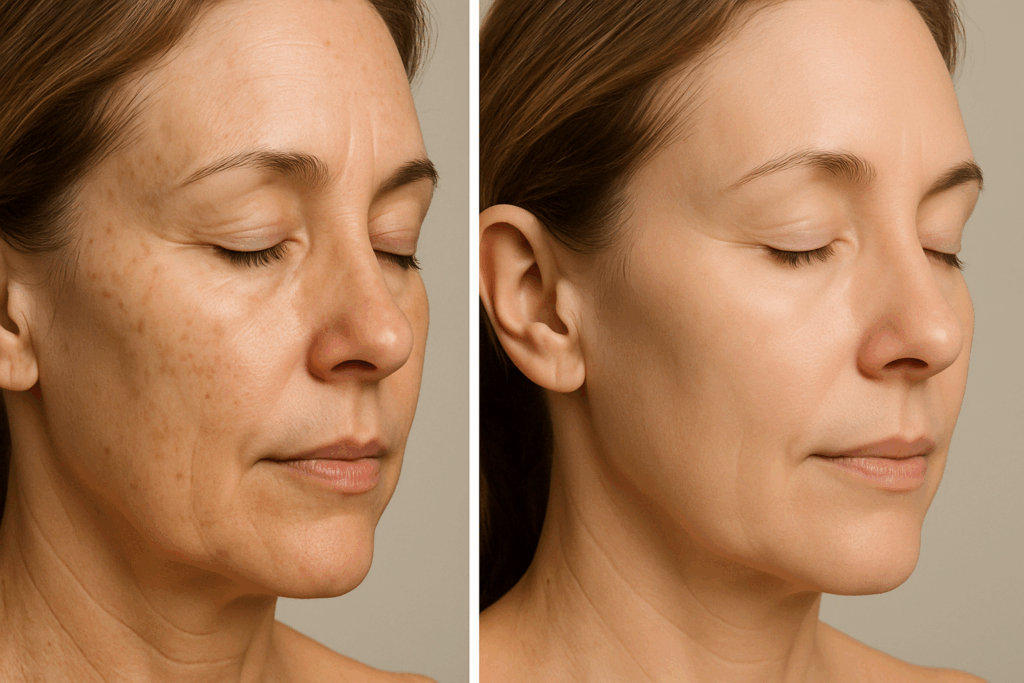
Comparing Retinol Before and After Wrinkles and Pigmentation
While the primary focus of this article is on pigmentation, many individuals exploring retinol before and after effects are equally interested in its impact on fine lines and wrinkles. The mechanisms by which retinol reduces hyperpigmentation are closely tied to those that improve skin texture and diminish signs of aging. Retinol promotes dermal remodeling by enhancing collagen and elastin synthesis, which results in smoother, firmer skin with fewer visible creases.
High-quality before-and-after photographs frequently show concurrent improvements in both wrinkles and pigmentation, reinforcing the multifunctional benefits of this ingredient. When analyzing the combined results of retinol before and after wrinkles and dark spots, dermatologists observe that areas of previously sun-damaged skin become not only more even in tone but also more resilient and hydrated in appearance. This dual action often leads to a rejuvenated complexion that appears both brighter and more youthful.
Patients who prioritize both pigmentation correction and wrinkle prevention are typically advised to use retinol as part of a comprehensive skincare regimen that includes moisturizers, antioxidants, and sun protection. The synergy between these products supports long-term skin health while minimizing irritation—a common concern among new retinol users. By reducing transepidermal water loss and shielding the skin from UV radiation, these complementary products create an optimal environment for retinol to work effectively.
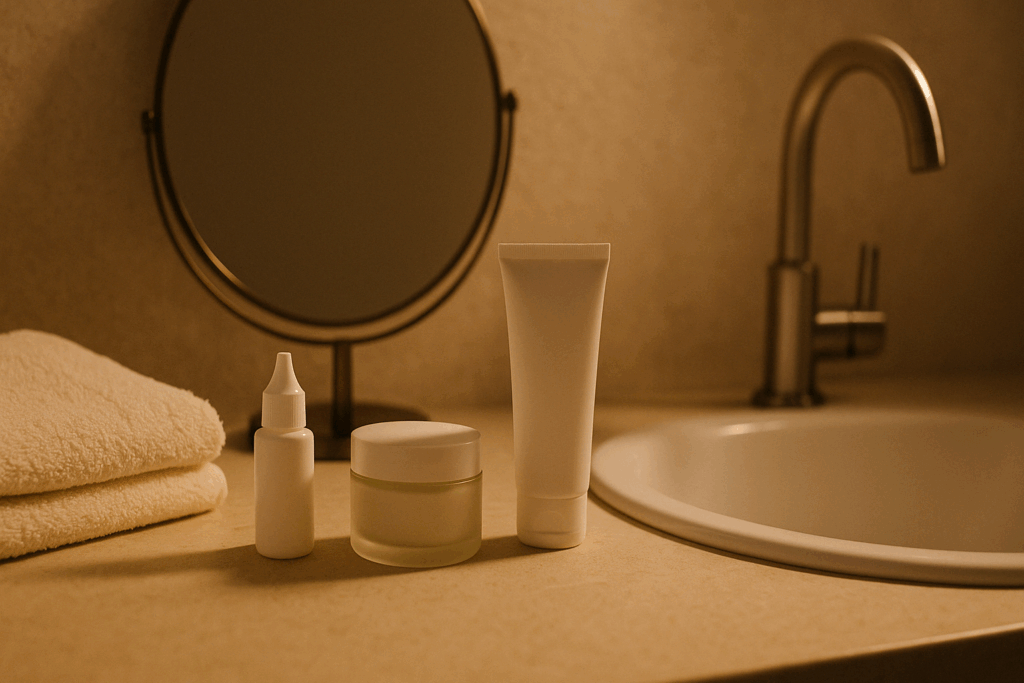
Safety Considerations and Best Practices for Retinol Use
Despite its impressive results, retinol must be used with care to avoid adverse effects such as irritation, dryness, or peeling. Understanding proper application techniques and selecting the right formulation can significantly enhance tolerability and results. Dermatologists often recommend starting with a low concentration of retinol—0.25% or less—and gradually increasing frequency as the skin builds tolerance.
Incorporating retinol into a nighttime routine is generally advised, as the compound is photosensitive and may degrade in sunlight. Applying a pea-sized amount to clean, dry skin, followed by a gentle moisturizer, can help reduce irritation. Sunscreen is non-negotiable during retinol use, as the exfoliated skin is more vulnerable to UV damage. Failing to protect the skin can not only reverse progress but also exacerbate pigmentation issues.
Another key consideration is the use of retinol in conjunction with other active ingredients. While some combinations, such as retinol and niacinamide, can enhance efficacy and reduce inflammation, others may increase the risk of irritation. For instance, combining retinol with exfoliating acids like glycolic or salicylic acid may be too harsh for sensitive skin. Consulting a board-certified dermatologist can help personalize a skincare plan that balances potency with skin tolerance.
Realistic Expectations: Interpreting Retinol Before and After Results
In an era dominated by curated social media content and influencer marketing, setting realistic expectations about retinol dark spots before and after results is more important than ever. While many users experience visible improvements, outcomes can vary based on factors such as skin type, underlying causes of pigmentation, product concentration, and adherence to a routine. Dermatologists stress that consistency and patience are key, and dramatic overnight transformations are rare.
It is also important to recognize that retinol does not permanently erase dark spots but instead manages their appearance by promoting even skin renewal. Continued use is typically necessary to maintain results, particularly for individuals with a predisposition to hyperpigmentation. Taking progress photographs every four weeks under similar lighting can help users objectively assess improvement and stay motivated.
In addition to physical changes, many individuals report psychological benefits from using retinol for dark spots. Improvements in skin tone and clarity can enhance self-esteem and confidence, underscoring the emotional dimension of dermatological care. By aligning expectations with evidence and fostering a long-term commitment to skin health, users can experience both aesthetic and mental well-being gains.
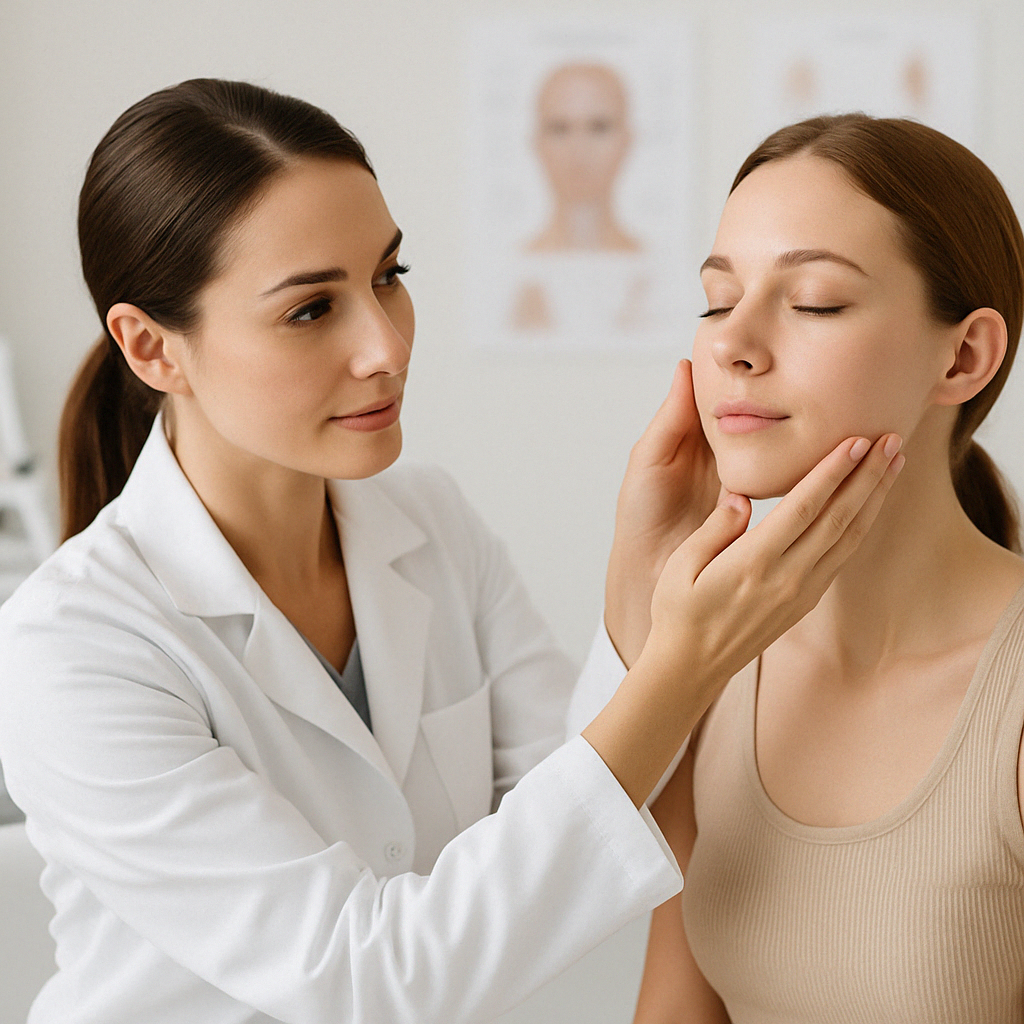
The Role of Professional Supervision and Customization
While over-the-counter retinol products offer accessible solutions, professional guidance can enhance outcomes significantly. Dermatologists can assess individual skin needs, recommend appropriate concentrations, and suggest complementary treatments tailored to specific pigmentation patterns. In some cases, prescription-strength retinoids or in-office procedures like chemical peels and laser therapy may be advised for more stubborn discoloration.
Customized regimens often incorporate other pigment-targeting ingredients, such as kojic acid, arbutin, and vitamin C, to maximize efficacy. When combined with retinol, these agents can create a synergistic effect that accelerates the fading of dark spots while minimizing irritation. Such professional-grade treatments typically require periodic follow-ups and skin monitoring, ensuring that adjustments are made based on progress and side effect management.
Additionally, individuals with sensitive or reactive skin benefit from tailored recommendations that prioritize barrier repair. Dermatologists may recommend starting with retinaldehyde—a gentler vitamin A derivative—before transitioning to retinol. This stepwise approach can ease the skin into retinoid use while still delivering meaningful improvements in pigmentation over time.

Frequently Asked Questions About Retinol for Dark Spots: Expert Insights Beyond the Basics
1. How long should I use retinol before expecting visible changes in dark spots?
While many sources emphasize a general timeframe of 8 to 12 weeks, the reality is more nuanced depending on your skin’s condition, retinol concentration, and lifestyle. For users tracking their progress through retinol dark spots before and after comparisons, noticeable changes may appear in as little as four weeks in younger skin with mild discoloration. However, older individuals or those with hormonally induced pigmentation may not see full improvements until the 16-week mark or later. It is also worth noting that the skin goes through several phases of cellular turnover before melanin reduction becomes visibly significant. To enhance outcomes, pairing retinol for dark spots with nightly hydration and consistent sun protection will not only safeguard results but also speed up visual recovery.
2. Are certain skin tones more prone to irritation or post-inflammatory hyperpigmentation with retinol?
Yes, individuals with deeper skin tones (Fitzpatrick types IV to VI) may be more susceptible to irritation that paradoxically worsens pigmentation. This is especially relevant when retinol use before and after cycles involve high concentrations without proper skin barrier support. Dermatologists recommend starting with encapsulated or time-released formulations for melanin-rich skin, as they release the active ingredient slowly to reduce the risk of rebound pigmentation. Additionally, layering retinol with calming agents like panthenol or using it after a barrier-repairing serum can help mitigate these risks. Despite the initial caution, retinol for dark spots remains effective across all skin tones when used thoughtfully.
3. Can I combine retinol with other brightening agents to fade dark spots faster?
Absolutely, and in fact, dermatologists often recommend a combination strategy for faster results. Ingredients like niacinamide, tranexamic acid, and vitamin C work synergistically with retinol by targeting different steps in melanin synthesis. When layered correctly, these ingredients amplify the brightening effects observed in retinol cream before and after photos. For example, vitamin C offers antioxidant protection during the day while retinol works overnight to stimulate turnover. However, it’s important to stagger introductions and avoid combining too many actives at once, especially in sensitive skin, to prevent irritation that can slow progress.
4. What role does sun exposure play in retinol treatment for hyperpigmentation?
Sun exposure is one of the most overlooked saboteurs in any skincare routine aimed at fading dark spots. Even minimal UV exposure can undo weeks of progress, particularly when the skin is in a vulnerable state from retinol-induced exfoliation. Individuals often observe disappointing retinol dark spots before and after comparisons when sunscreen isn’t consistently applied. Broad-spectrum SPF 30 or higher is essential every single day, even indoors or during cloudy weather, to protect the skin and allow retinol to function optimally. Mineral sunscreens with zinc oxide or titanium dioxide are generally preferred as they are less likely to irritate retinol-treated skin.
5. Can diet or supplements influence the effectiveness of retinol in improving dark spots?
Though topical treatments like retinol are the cornerstone for hyperpigmentation, internal support can enhance their efficacy. Diets rich in antioxidants, such as vitamins A, C, and E, support skin renewal and protect against oxidative stress that contributes to pigmentation. Emerging research also suggests that omega-3 fatty acids may help reduce skin inflammation, making retinol before and after improvements more stable over time. Some dermatologists now recommend pairing topical retinol with oral supplements like astaxanthin or collagen peptides to reinforce skin elasticity and speed up healing. While not a substitute, nutrition acts as a supportive foundation that makes topical treatments more effective and longer lasting.
6. Is there a difference in outcomes between prescription retinoids and over-the-counter retinol for dark spots?
Prescription retinoids like tretinoin typically deliver faster and more dramatic results than over-the-counter retinol formulations. However, this potency often comes with increased irritation, which can limit long-term use or lead to inconsistent application. Many patients who have experienced both report that while tretinoin shows quicker results in retinol dark spots before and after progress, retinol offers a gentler, more sustainable option. Some modern OTC retinols are formulated with encapsulation technologies that enhance penetration while minimizing side effects, narrowing the performance gap. Ultimately, consistency and formulation quality play a bigger role in long-term success than simply choosing the stronger product.
7. How does retinol use affect skin texture in addition to pigmentation?
One of the lesser-discussed benefits observed in retinol use before and after reviews is the improvement in overall skin texture. Retinol not only fades discoloration but also refines pores, smooths rough patches, and softens fine lines. This is because its action extends beyond the epidermis into the dermis, where it boosts collagen production and improves skin elasticity. Many users note that their skin feels firmer and more even-toned after consistent retinol application, even if the pigmentation fades more gradually. Thus, retinol before and after wrinkles and dark spots reveal a multifaceted transformation, making it a comprehensive rejuvenating treatment.
8. Are there any age-specific considerations when using retinol for dark spots?
Yes, skin in different life stages responds differently to retinol. In younger individuals, retinol is often used to address post-acne hyperpigmentation, and retinol for dark spots in this context tends to yield faster, more uniform results. In contrast, mature skin may require higher concentrations or supplemental ingredients to counteract deeper, age-related pigmentation and slower cellular turnover. However, mature users often gain additional benefits, such as improvement in wrinkles and firmness, as documented in many retinol before and after wrinkles comparisons. Regardless of age, personalized routines are essential, and the choice of formulation should reflect the skin’s regenerative capacity and sensitivity.
9. Can seasonal changes affect the outcome of retinol treatments?
Yes, environmental conditions such as humidity, temperature, and UV index can significantly influence how the skin reacts to retinol. In winter, for example, cold air and indoor heating can exacerbate dryness and irritation, potentially stalling the visible progress shown in retinol dark spots before and after cases. Conversely, in warmer, more humid climates, the skin often tolerates retinol better, which may accelerate improvements. Seasonal fluctuations may also necessitate adjustments in supporting skincare—such as switching to heavier moisturizers in winter or lighter serums in summer—to optimize results. Staying attentive to your skin’s needs year-round will enhance the consistency and longevity of retinol outcomes.
10. What innovations are emerging in retinol formulations that may improve outcomes for dark spots?
Recent advancements in skincare science have led to the development of novel delivery systems designed to improve retinol stability and skin penetration. Microencapsulation, liposomal carriers, and slow-release emulsions are transforming how retinol for dark spots interacts with the skin barrier. These technologies aim to maximize efficacy while reducing the irritation typically associated with traditional formulations, making it easier for users to stick with their routine long enough to see retinol before and after improvements. Additionally, hybrid formulas that combine retinol with peptides or botanical extracts are gaining popularity for offering a dual-action approach to both pigmentation and skin resilience. As the industry continues to evolve, we can expect retinol to remain at the forefront of hyperpigmentation treatment, now with more customization and fewer drawbacks.
Reflecting on Retinol’s Long-Term Impact on Hyperpigmentation and Skin Health
As the body of evidence grows, so too does confidence in the long-term benefits of retinol for dark spots. When used correctly, retinol serves as both a corrective and preventive tool, addressing existing pigmentation while reducing the risk of future discoloration. Its enduring popularity among dermatologists and consumers alike stems from its versatility, efficacy, and well-established safety profile.
Examining longitudinal studies and patient testimonials reveals a consistent theme: retinol use before and after several months results in noticeably clearer, more luminous skin. While the journey may require persistence and informed decision-making, the payoff is often a renewed sense of confidence and an improved relationship with one’s skin. Retinol, when embraced as part of a holistic skincare strategy, proves not only to be a solution for hyperpigmentation but also a catalyst for long-term skin vitality and wellness.
In a world of ever-evolving skincare trends and emerging treatments, retinol remains a gold standard—rooted in science, endorsed by experts, and continually refined to meet diverse skin needs. For those navigating the challenges of dark spots, the documented retinol dark spots before and after outcomes offer both hope and clarity. They serve as a testament to what is possible when patience meets evidence-based care.
Was this article helpful? Don’t let it stop with you. Share it right now with someone who needs to see it—whether it’s a friend, a colleague, or your whole network. And if staying ahead on this topic matters to you, subscribe to this publication for the most up-to-date information. You’ll get the latest insights delivered straight to you—no searching, no missing out
Further Reading:
Dermatologists on How to Get Rid of Dark Spots … – Vogue
Retinol Has Many Skin Benefits. Here’s How to Use It.
These Retinol Before and Afters Show How the Ingredient Diminishes Wrinkles, Discoloration and More
Disclaimer
The information contained in this article is provided for general informational purposes only and is not intended to serve as medical, legal, or professional advice. While Health11News strives to present accurate, up-to-date, and reliable content, no warranty or guarantee, expressed or implied, is made regarding the completeness, accuracy, or adequacy of the information provided. Readers are strongly advised to seek the guidance of a qualified healthcare provider or other relevant professionals before acting on any information contained in this article. Health11News, its authors, editors, and contributors expressly disclaim any liability for any damages, losses, or consequences arising directly or indirectly from the use, interpretation, or reliance on any information presented herein. The views and opinions expressed in this article are those of the author(s) and do not necessarily reflect the official policies or positions of Health11News.